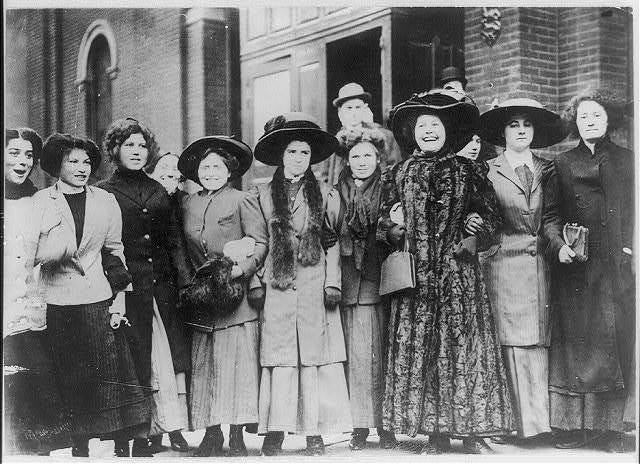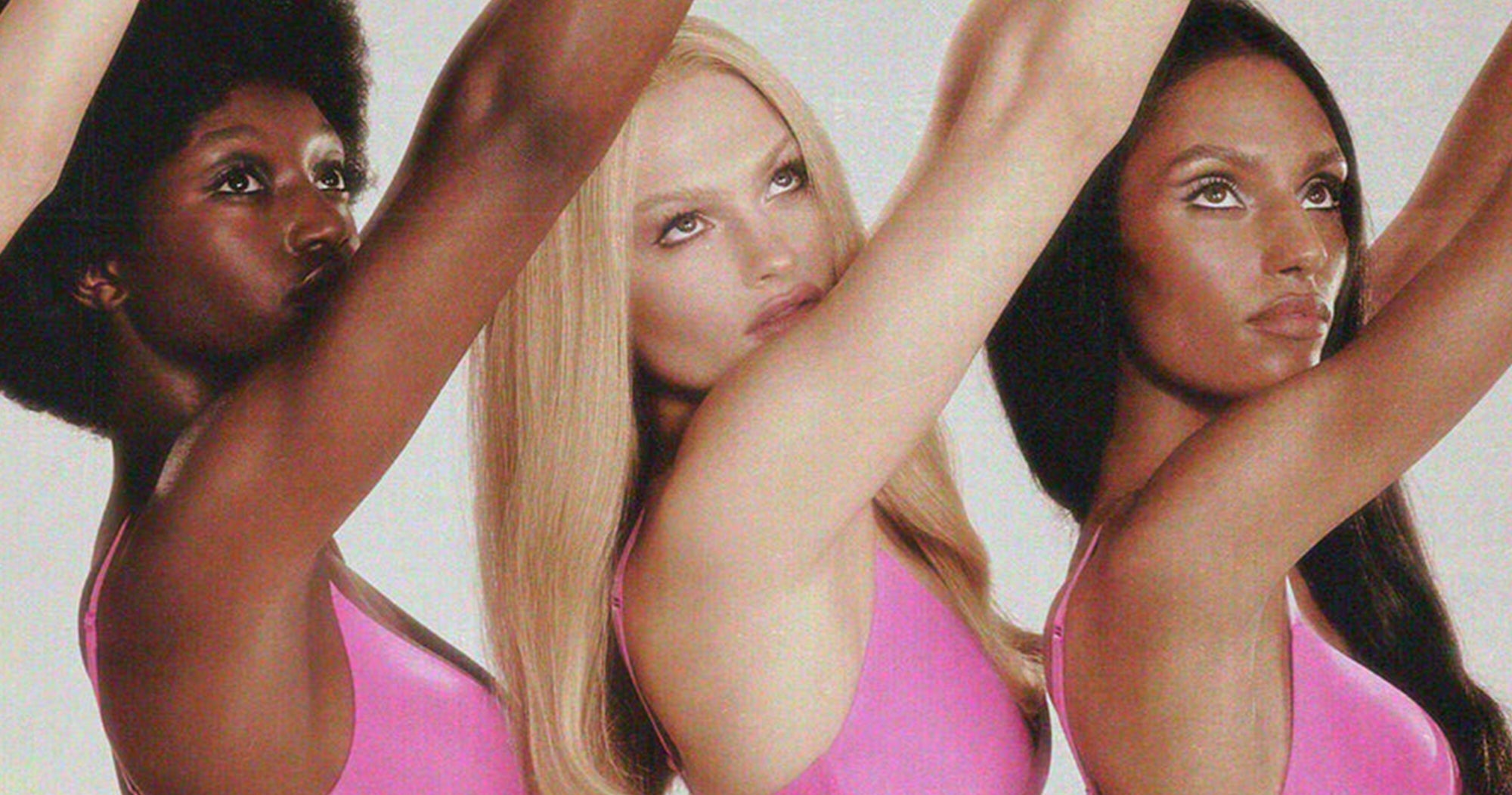On November 22, 1909, approximately 20,000 garment workers in New York City went on strike against the horrendous conditions of their sweatshops. This strike, known as the Uprising of the 20,000, was the largest strike led by women in American history to that time. It also created a whole generation of activists who kept up the fight for justice for their entire lives.
New York City was America’s immigrant center in the early 20th century, but work in the Big Apple was quite different than the big factories we usually identify with American industrialization and immigrant labor. Because land was so expensive in New York, large manufacturing firms set up shop outside of New York in order to create sprawling compounds that would hire thousands of workers. This meant that immigrants in the city tended to work behind the scenes, especially in small operations hidden in the dense urban jungle. Many women workers found jobs in the garment sweatshops. Much of this work was taken over by Jewish immigrant women, a group that quickly obtained a reputation for labor radicalism. In fact, while non-Anglo Saxon employers of the time tended to hire people of their own ethnicity, many Jewish sweatshop owners preferred Italian labor because they were less likely to complain about bad working conditions.
And bad conditions they were indeed. Workweeks started at 65 hours and could reach 75. The work was also not stable; if orders went down, workers could be laid off at any time. Depending on their job and experience, these women could earn anywhere from 3 to 10 dollars a week, which were poverty wages even at the higher level. About half of these women were less than 20 years old, as Jewish women tended to leave the workforce after they married. They were required to supply their own materials such as needles and they could have their pay docked for the slightest infraction. Factory owners tried to control their workers’ movements, including locking doors so they could not sneak outside for breaks and requiring permission to use the usually quite unsanitary bathroom.
Jewish immigrants had already established a strong activist community in New York and so it wasn’t that surprising that the summer and fall of 1909 saw several spontaneous strikes against the sweatshop owners. Among the firms whose workers walked out was the Triangle Shirtwaist Company, which workers accused of all the above indignities along with sexual harassment of the female work force by male supervisors. Of course, two years later, this very place would become infamous as the site of America’s most famous workplace tragedy, when 146 died in the Triangle Fire.
These strikes struggled along for several weeks, suffering from police harassment, less than inspired leadership from the highers-up at the International Ladies Garment Workers Union (ILGWU), and harsh sentences from anti-labor judges when arrested. By late November, the strikes were falling apart. On November 22, Local 25 of the ILG held a meeting of all workers to call for a general strike against the shirtwaist makers for whom most of the workers toiled. At the meeting, New York Progressives and labor leaders, including American Federation of Labor president Samuel Gompers, urged caution.
After listening to this for two hours, a sweatshop worker named Clara Lemlich stood up and spoke to the workers in Yiddish, saying, “I am a working girl, one of those who are on strike against intolerable conditions. I am tired of listening to speakers who talk in general terms. What we are here to decide is whether we shall or shall not strike. I offer a resolution that a general strike be declared — now.” This is what the angry workers wanted to hear. They pledged to support the strike, which began the next day.
The strikers faced a tough road. Police repression rose. Over 700 women were arrested in the next month, 19 of whom were sentenced to a workhouse. Clara Lemlich suffered six broken ribs through an act of police brutality and was arrested 17 times. A 10-year-old girl was arrested and sentenced to the workhouse for assaulting a scab. Not sure what a 10-year-old could have done that rose to the level of assault, but of course facts don’t matter when you are busting unions.
But despite this, or perhaps because of it, public opinion turned against the operators. 1909 was at the height of the Progressive Era and there were many middle- and upper-class reformers who sympathized with the workers. Wealthy women began joining workers on the picket lines and bailing the arrested women out of jail. Among them was future Secretary of Labor Frances Perkins. Another was the daughter of the uber-capitalist himself, J.P. Morgan.
This bad press forced the sweatshop owners to negotiate with the workers. The workers wanted to hold the line at getting the union shop but after 11 weeks without work and with only tepid support from the ILGWU international, they were forced back to work with only minimal gains and without the union shop. Only about 1000 out of the 20,000 were still on the picket lines, succumbing to the greatest enemy of the strike — poverty.
That said, the manufacturers did agree to some real concessions that made the strike worthwhile, including a 52-hour work week, four paid holidays per year, the end of having to buy one’s own work materials, and a general agreement to negotiate pay rates with workers. They also agreed not to discriminate against union members, but this was totally unenforceable and many leaders were blacklisted. Local 25 exploded from 100 members to 10,000. On the other hand, working conditions did not improve much at all, something that the nation would discover two years later at Triangle.
The ILGWU grew rapidly in the years after 1909. Although it took until the mid-1930s for the union to become a consistently powerful force in the industry, the Uprising of the 20,000 became central to its institutional memory, even in its early years. Garment workers remembered 1909 with great pride, producing songs like this:
The Uprising of the Twenty Thousand
Dedicated to the Waistmakers of 1909In the black of the winter of nineteen nine,
When we froze and bled on the picket line,
We showed the world that women could fight
And we rose and won with women’s might.Chorus:
Hail the waistmakers of nineteen nine,
Making their stand on the picket line,
Breaking the power of those who reign,
Pointing the way, smashing the chain.And we gave new courage to the men
Who carried on in nineteen ten
And shoulder to shoulder we’ll win through,
Led by the I.L.G.W.U.
Among the blacklisted workers was Clara Lemlich, who was a committed socialist before immigrating from Russia in 1903. She joined the Communist Party and spent the rest of her life organizing people, beginning with women’s suffrage and then moving onto consumer rights and tenant rights when she became a non-working mother. She opposed the execution of the Rosenbergs and her passport was revoked after a trip to the Soviet Union in 1951. At the end of her life, while in a nursing home, she organized the home’s workers into a union and convinced the institution to honor the United Farm Workers’ grape boycott. She died in 1982 at the age of 96.
Annelise Orleck, Common Sense and a Little Fire: Women and Working-Class Politics in the United States, 1900-1965
Michelle Markel and Melissa Sweet, Brave Girl: Clara and the Shirtwaist Strike of 1909 — a book for kids!
Daniel E. Bender and Richard Greenwald, eds., Sweatshop USA: The American Sweatshop in Historical and Global Perspective
The preceding links give Wonkette a small commission.
























































![Key Metrics for Social Media Marketing [Infographic] Key Metrics for Social Media Marketing [Infographic]](https://www.socialmediatoday.com/imgproxy/nP1lliSbrTbUmhFV6RdAz9qJZFvsstq3IG6orLUMMls/g:ce/rs:fit:770:435/bG9jYWw6Ly8vZGl2ZWltYWdlL3NvY2lhbF9tZWRpYV9yb2lfaW5vZ3JhcGhpYzIucG5n.webp)





















